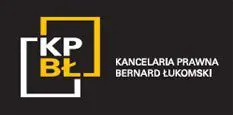Warsaw, May 21, 2024
Transferring tax liability for the tax obligations of a limited liability company to a third party requires that tax authorities meet a number of procedural requirements.
It might seem that the very fact of the existence of arrears and the lack of grounds for exoneration premises decides the case to the detriment of the former management board member.
However, as it turns out, issues such as the correct issuance of the decision, its signing and if it was correctly served are of fundamental importance.
In the case of our client’s liability, none of these conditions were properly met by the tax authorities.
According to the administrative courts of both instances, the decision of the second-instance tax authority, upholding the decision of the first-instance tax authority, had to be annulled because there were serious doubts in the case as to:
1) how many copies of the decision of the first instance authority are there (i.e. only the electronically signed copy or both handwritten and electronically signed)
2) how many counterparts of the decision of the first instance tax authority were sent to the party,
3) in what format was (were) the copy (copies) of the decision(s) of the first instance body sent to the party
4) whether the copy of the decision sent to the party was actually signed,
5) whether the signature of the representative of the first instance authority was correct (i.e. it met the requirements specified by law).
The Voivodship Administrative Court upheld our client’s complaint and overturned the decision of the second instance tax authority, finding that the above issues are of significant and decisive importance from the point of view of the possibility of transferring liability to a former member of the management board. The Director of the Tax Administration Chamber, not agreeing with the court’s position, filed an appeal with the Supreme Administrative Court.
The NSA noticed (and confirmed) that the printout from the signature panel does not confirm the signing of the decision with an electronic signature. Therefore, according to the Supreme Administrative Court, it cannot be considered as confirming the correctness of the signature. The Supreme Administrative Court noted that the signature panel did not indicate who was to sign the decision. There was no data identifying the decision itself on the printout. Moreover, the field that should contain information about the person signing the decision, the validity of the certificate and other important data cannot contain only an image of the first page of the decision.
Such circumstances indicate it cannot be ruled out that a manually signed decision was sent to the party instead of an electronically signed one.
Moreover, the signature verification report does not contain information that would allow determining that a specific decision has been signed and that the signature is valid.
We must not forget that a decision issued by an administrative authority in the form of an electronic document must be accompanied by a secure electronic signature, verifiable using a valid qualified certificate.
The basic rules of procedure indicate that the decision may be signed either with an electronic signature or with a handwritten signature. It means that there can only be one original of the decision, and a decision that was successfully served may produce legal effects.
In a situation where in fact two decisions were issued in a given case (one signed by hand, the other signed electronically), it would be necessary to determine which of them was issued first. It is not permissible for two decisions to exist.
As a consequence, only the ‘older’ decision can be served, because “there cannot be two originals of the decision,” as the Supreme Administrative Court rightly stated. However, while it is possible to determine the date (or even a specific hour, minute or second) of signing a given decision with an electronic signature, it seems very difficult (if not impossible) in the case of a decision signed by hand.
Bernard Łukomski
Legal Counsel
Tax Advisor
tel. +48 608 093 541
WhatsApp+48 692 802 229
